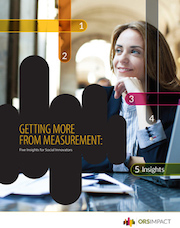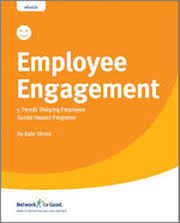Resources
CNJG's website features resources from 77 philanthropy supporting organizations, their 7,000+ grantmaking foundation members, and colleague philanthropic partners. There are several different ways to search the resource library. Using the filters on the right side of this page, you can search by resource type, funding area, topic, or audience. For example, if you are looking for a case study, select that resource type, then filter by funding area, audience or topic to refine the results. Please note, the search box below only searches resources. If you're looking for news or events, use the search box in the upper right corner to search the entire site.
CNJG family foundation members can also search for additional resources through our members-only portal to the National Center for Family Philanthropy Knowledge Center.
- resource provided by the Forum Network Knowledgebase.
Search Tip: Search with " " to find exact matches.
Why is the food system important to philanthropy? Because hunger, food insecurity, nutrition-related chronic disease, the health of resource lands and waterways, wages, and equal opportunity in the food economy all converge in our regional food system.
This piece captures five key insights to guide organizations as they develop ongoing Measurement, Learning, and Evaluation plans to achieve greater social impact.
Updated publication from CFLeads focusing on resident engagement for community foundations.
In a 2013 survey, funders were asked about the biggest transparency challenges they faced. The highest response was “not enough clarity around practical steps for being transparent.” This guide from GrantCraft & Glasspockets is helping foundations open up with clear action steps.
Communities thrive when people are housed comfortably, safely, and affordably. This is especially true for children. And when children thrive, their educational and other outcomes are more likely to be positive. Washington Regional Association of Grantmakers' What Funders Need to Know looks at the connection between stable housing and educational outcomes.
This case study examines the experience of the Corporation for Supportive Housing as it worked with the nonprofit consultancy AchieveMission to understand and adopt better human capital management plans and practices.
A key objective of the Scaling What Works initiative has been to translate insight and learning from grantmaker intermediaries involved with the Social Innovation Fund and share them with the broader philanthropic community. The fifth guide in the Lessons Learned series presents the benefits and challenges of partnerships between local and national funders, and highlights key considerations for both kinds of funders to foster success in their collaboration.
D5′s State of the Work 2013 features lessons learned from executives of the American Express Foundation, the Baltimore Community Foundation, Access Strategies Fund, the Silicon Valley Community Foundation, Lloyd A. Fry Foundation,...
A growing number of foundations and philanthropists have elected to give away their money by a fixed date rather than establish perpetual foundations.
In a series of four podcasts, GrantCraft explores the values, motivations, and stories of the up-and-coming generation of philanthropists.

This piece from ORS Impact captures five key insights to guide organizations as they develop ongoing Measurement, Learning, and Evaluation plans to achieve greater social impact.
This PowerPoint presentation developed by Southeastern Council of Foundations provides an excellent overview to the pros and cons of different philanthropic structures for Corporate entities, including Corporate Foundations, Corporate Giving Programs, and working through Community Foundations.
Philanthropic organizations of all shapes and sizes are well positioned to support Communities for a Lifetime (CfaL). This issue brief explores four roles for philanthropy in advancing CfaL work.

Employee engagement through cause is a vital means by which to strengthen employee relationships, enhance employee morale and even build critical skill sets and expertise. Plus, employees are hungry for ways to get involved in cause.
The purpose of this document is to advance the Hewlett Foundation’s existing work to make their evaluation practices more consistent across the organization.
